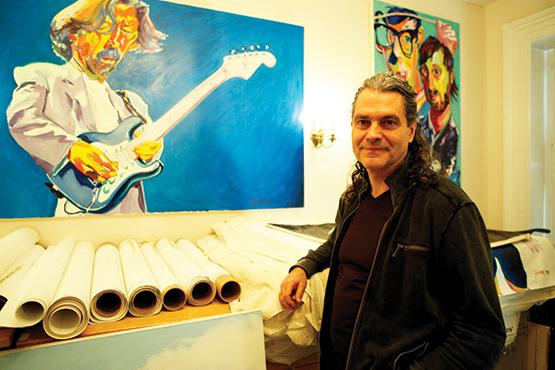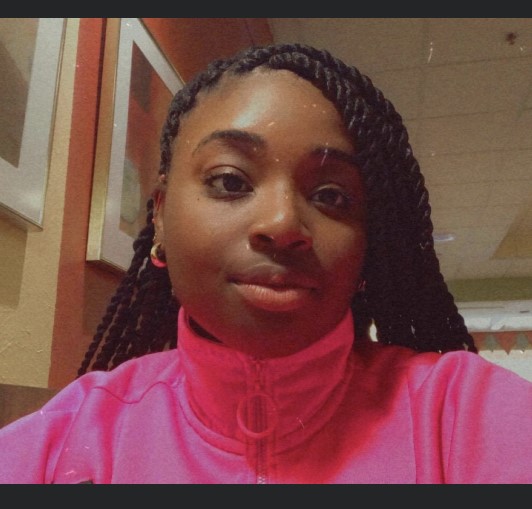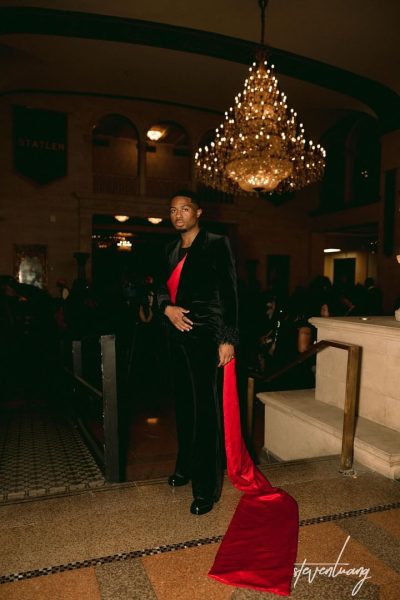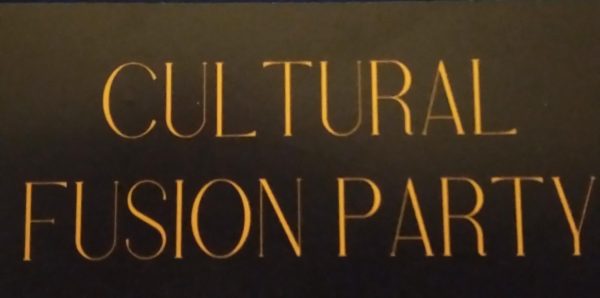A new painting marks a new chapter for artist Philip Burke

October 20, 2015
The downpour that hung over the 13th Annual Music is Art Festival didn’t stop renowned painter Philip Burke from his passion. The artist, best known for his expressionist portraits of pop-culture icons ranging from Tupac, to Princess Diana, to Newt Gingrich, commissioned a new portrait, this one of local Vanity Salon stylist Erin Moser, much to the delight of the VIP audience on the balcony of the Marcy Casino at Delaware Park.
Burke is a vigorous and enthusiastic painter with a steady hand. He is unfazed by the noise generated from the surrounding crowd, and four active nearby music stages. One of which is blasting all varieties of house music from just below the balcony where Burke has set up his outdoor studio for the day. If anything, the noise seems to amplify his energy. In fact, he’s brought his own upbeat music in the form of a small Bose speaker that booms from the corner behind his easel and blends seamlessly into the surrounding cacophony.
Burke is highly energetic in his movements from canvas to palette, to brush-table, in a deliberate but unpredictable order. According to Bruce Moser, the accomplished music promoter, Buffalo Music Hall of Fame inductee, and father of Erin, Burke did a few studies days prior in preparation for the painting, so he has a general idea of what he wants to do. But it’s clear that much of the process is spontaneous from the way he is constantly flicking his eyes from subject to canvas and back again before making a precision brush stroke that brings her lips to life, or a carefully considered thumb-press that enhances the detail of her chin.
He has the array of colors he’s using and that are his go-to favorites, set up on his palette, a small wooden table to his right, that ranges through the rainbow from Alizarin Crimson, Dioxazine Purple, Ultramarine Blue, Cielo Blue, Cielo Green, Permanent Green Light, Cadmium Lemon, Cadmium Orange, Cadmium Red Light, and Cadmium Red Deep, but beyond that, it’s spontaneous.
“I decide what I’m going to use in the moment,” Burke said. “It’s not thought out at all. I have my palette, but otherwise it’s very instinctive and in the moment.”
The movements are to and fro, suddenly retreating from the canvas and just as suddenly marching forward, re-engaging, then legs apart, ready to lunge, rocking towards and away from his subject. Erin, seated erect, just to the left of the canvas, hands holding a cup of coffee for warmth, confirm this. He is sharpening his focus and finding those minute details that enable him to do what he does best; capture both the person and their essence, their personality, his understanding of who they are underneath the physical self. It sounds chaotic, and in some ways it is, but it’s equally melodic. He appears very much in control, seemingly always prepared for the next brush stroke.
“I started to get serious when I was 15. I don’t know exactly what got me started, but when I found the caricatures of David Levine I was immediately attracted to it (drawing). I couldn’t not do it. I wasn’t happy unless I was doing it.”
The dedication shows in his deftness of movement and execution that represents mastery of a craft honed over the course of forty-four years. Burke is able to complete the portrait in six hours, despite stopping for forty minutes to warm up in the car, (he’s recovering from Bronchitis) stopping again for a family dinner provided by Chef’s, and regularly conversing with Erin, and the multitude of fans, new-found admirers, and business associates who stop by his brush-table to say hello and compliment him on the work. And it’s as good as any. When Erin gets up from her pose to see her portrait, she lets out an ecstatic shriek of “Oh my god! That is amazing! I love it!” And she should, it’s a beautiful reflection of the self, and she’s joined a select group of individuals to be immortalized by Burke. Though, Burke and his wife Geri, devout True Buddhists for the past 33 years, would likely argue no such act to be necessary.
Burke started gaining traction shortly after dropping out of Toronto University and moving to New York City with about a hundred dollars in his pocket, and no real plan.
“It was just sort of by the seat of my pants,” he said, “I always knew I had go to New York. It was ‘76-77 and there was no Internet or anything, so you had to go there.”
He did what he had to do to make it, crashing with the brother-in-law of a schoolmate, and then on the floor of a neon gallery, but not for long. Already drawing for five years, and no doubt naturally capable, he found work almost immediately, getting picked up by the Village Voice.
Ever the fan of Ralph Steadman, of Fear and Loathing in Las Vegas fame, Burke found early work drawing for left-leaning political magazines. Work that, according to him, he’s happy to have left in the past.
“When I turned twenty-five, that really caustic, hard-hitting political work started to take its toll on me. And I started to get an ulcer. And all the negativity started to eat at me from the inside,” Burke said. “I was getting a lot of work and getting a reputation. But I started to develop this kind of arrogance like I was the judge. And I started really looking down on everybody.”
It was during this time on a trip home to Buffalo that Burke met his wife, who introduced him to Buddhism, the practice of which they both attribute their sense of fulfillment to, and have dedicated much of their lives to as well. For Burke, it was especially life-changing.
“When I started practicing (Buddhism) I started painting. Which I had been afraid to do. I’d been afraid at failing at painting. But when I started practicing, I started to perceive people more deeply. I started to portray the different sides of people.”
To Burke, Buddhism not only changed his worldview, but changed his art and life as well. Painting led to work for Vanity Fair. And even though the magazine dropped him mid-contract, the job would ultimately lead to him achieving a long-term dream, finally catching the attention of Rolling Stone in the late 80’s. After some lean years, as Burke put it, in which he recalls doing an image on a Buffalo clothing store window for fifty dollars, he caught the break that allowed him the freedom to pursue his passion while maintaining his family life.
Working for Rolling Stone resulted in the painting of some his favorite works including Miles Davis, Kurt Cobain, Bill Murray, and Jim Morrison. There was never any formal contract, but the work lasted seven years and generated so much buzz that, for the first time ever, Burke was actually forced to turn down offers. And when work with Rolling Stone ran out, The New York Observer picked him up for another 15 years. All of that momentum led to the prolific body of work he has today, some of which spent the last six months as a part of “The Likeness of Being Gallery” that saw its last day at the Burchfield Penney Art Center on Sunday, Sept. 13.
To Burke, the show at the Burchfield is one of many steps in coming back into public life. For the past twenty-five years he’s been mostly outside of society, working solely from his studio here in Buffalo. Burke said he feels mature enough to handle fame in a way he couldn’t have at twenty-five.
“I feel ready to meet my audience in a way that is about connecting with them and not taking from them, it’s about sharing my heart and my life with the people,” he said. “I feel really fortunate that I’ve been able to do this just by following my heart, and going after my true love (Geri).”
There is one thing above all others, though, that has made Burke’s life and continuing legacy possible. If he hadn’t picked up a pen, none of the people on this windy rain-soaked balcony would be nearly as happy about their being here. So, to the aspiring artist, Burke has this to say, “Draw. Draw. Draw. Draw. Become the best draftsperson you know. That foundation will be what makes your work accessible to people, and then naturally what you need to do will happen.”














GERRY FITZ • Feb 14, 2022 at 12:43 pm
Philip and Geri are pieces of work who created discord and trauma in a Buddhist group in Toronto in the late 90s. Sorry to hear they are still around tainting Buddhist teachings.